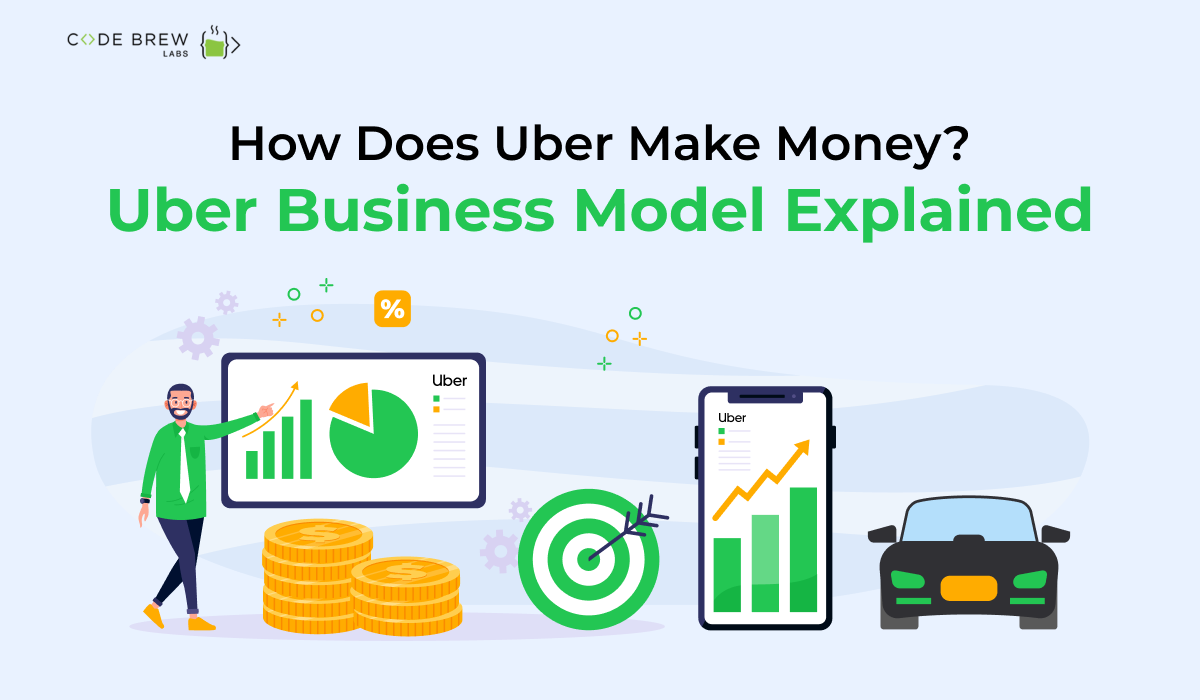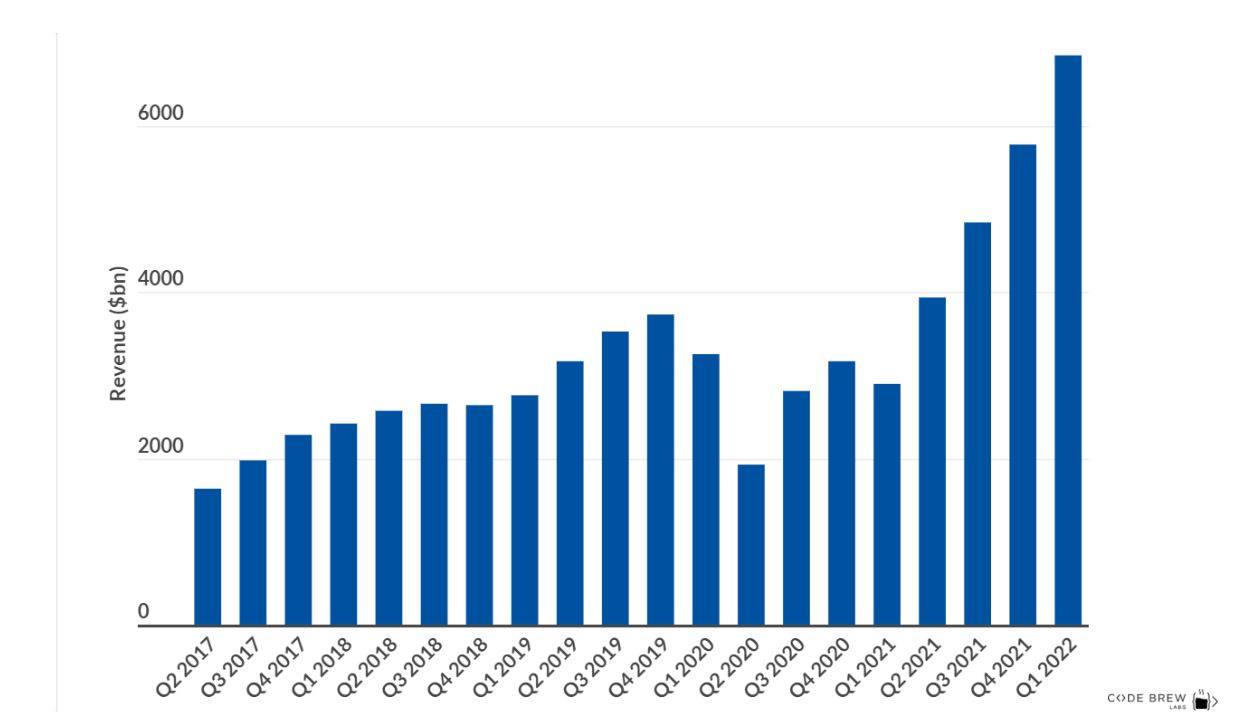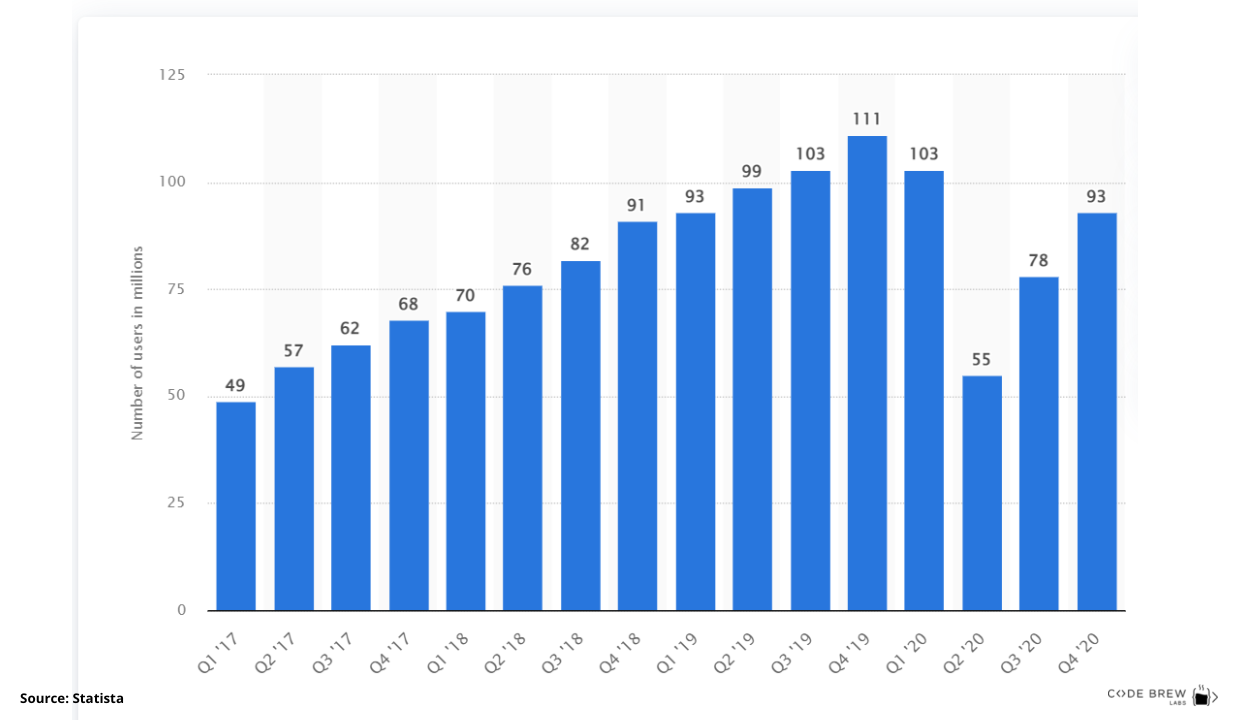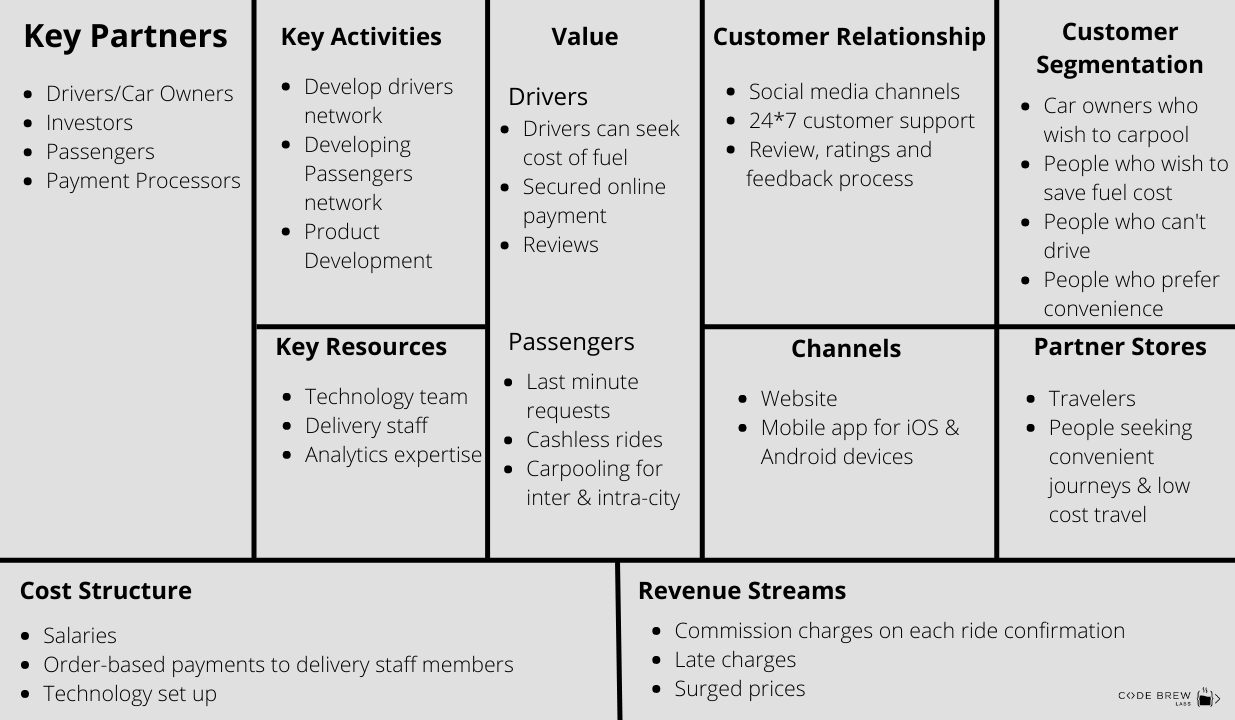
Uber – A brand that doesn’t need any introduction. This taxi business accelerated and brought multiple revolutionary changes in 2010s the most. In 2021, Uber generated a whopping profit of $17.4 billion. This was recorded as a profit increase of up to 56% from the previous years.
Table of Contents
The ever-growing profit rate of this on-demand cab aggregator is seen as a major source of inspiration for many entrepreneurs in the marketplace. As a result, more and more entrepreneurs and businesses are looking forward to building and running an Uber clone app.
So, what’s the hurdle?
Well, the biggest hurdle is knowledge about the industry insights and processes. If you are facing the same obstacles, you are at the right spot.
Let’s begin with the statistics, business model and revenue model of Uber.


Uber has become something more than just an on-demand taxi business. It has entered into multiple domains ranging from the food industry (Uber Eats) to on-demand trucking services (Uber Freight).
In simple words, Uber works as an on-demand digital aggregator connecting passengers and drivers to initiate ride booking and confirmation.
The app consists of multiple interfaces and panels including –
All these interfaces consist of a set of features facilitating complete operational efficiency and leverages. Now before we learn about its actual functionality let’s sail through some common features of all three platform interfaces.
The user can log in or sign up in order to create a personal account and unlock the line of features and functionalities.
Users can enter, edit and update their profile information to get better location accuracy. Further, this helps in easier ride booking.
It is one of the most talked about third-party integrations that enable GPS location tracking for hassle-free ride booking and real-time updates.
Users are notified with quick push notifications to keep them updated with the ride-booking and other updates.
Drivers can connect with the passengers requesting a ride via in-app call or text feature. It enables call or chat promptly, helping the drivers get quick updates on the passenger’s location.
Multiple payment integration option enables the users to get access to multiple payment options including – credit card, debit card, PayPal, UPI, and many other options.
Users can rate the ride at completing the ride with the driver. This feature pops up automatically after the ride completes. Here, the user can rate or review the drivers’ services.
Drivers can log in or sign up using a unique set of credentials. This enables the driver to create a personalized account and unlock the advanced features.
Drivers can enter, edit and update their profile information to get better location accuracy. Further, this helps in easier ride booking.
It is one of the most talked about third-party integrations that enable GPS location tracking for hassle-free ride booking and real-time updates.
Drivers are notified with quick push notifications to keep them updated with the ride-booking and other updates.
Multiple payment integration options enable the drivers to get access to multiple payment options including – credit card, debit card, PayPal, UPI, and many other options.
Drivers can view the total earnings of a month or quarter to analyze the progress or profits made. This feature helps to keep a track of revenue done.
Drivers can accept or reject ride requests based on the charges and location.
Drivers can connect with the passengers requesting a ride via in-app call or text feature. It enables call or chat promptly, helping the drivers get quick updates on the passenger’s location.
The admin can manage the list of drivers listed in the app. Be it adding or removing a driver from the app or viewing the rides booked by a particular driver, the admin has got complete access to all such insights.
The admin can view passengers registered on the app and manage them accordingly. Managing them includes – adding or removing the passengers (based on a legit reason), viewing the passengers’ information to provide 24*7 support related to ride booking, and other issues experienced.
Admin gets complete control over the earnings done through the booked rides. This enables the admin to keep a track of profits earned in the set time duration.
Admins decide the commission to be split between the drivers and the on-demand taxi business.
An on-demand taxi app model works on a set of steps including –
Drivers and passengers are required to log in and create a personalized account on the app.
Passengers can search for a particular location via in-app Google Maps. This lets the users enter a particular location (destination) to book a ride.
Once a driver confirms the ride booking for the mentioned location, the ride begins with a real-time Google Maps display. This is to give timely updates.
Users need to pay for the ride when completing the trip with the driver. This unlocks the multiple payment options to help the passengers and drivers to initiate a transaction and complete the trip successfully.
The passengers (users) can rate and review the ride based on the quality standards mentioned.

The thought of getting developed and launching an on-demand taxi business model like Uber sounds more meaningful when you are familiar with – how does Uber make money?
Here’s the answer to it.
An on-demand taxi app like Uber offers a pre-decided share of the overall amount earned on each ride with the respective drivers. This is while keeping one share of the taxi business. Generally, the commission rate varies based on the on-demand taxi services. However, it remains somewhat between 15 to 30% in general.
On-demand taxi apps offer cab services at surged prices at times. Generally, this happens when a particular region is short of cabs or it’s difficult to offer taxi services due to unfavorable weather conditions. The surged prices charged to act as the direct profit for the taxi business and drivers.
When the user (passenger) cancels a ride at the last moment, s/he is charged with a certain penalty amount. This amount directly goes into the taxi business account and is treated as one of the forms of revenue generated.
These days, on-demand taxi services are open for premium ride services which eventually requires a lavish set fleet to cater to premium users. Naturally, the prices for such on-demand taxi services are a bit higher than the usual ones. Therefore, the share amount among the drivers and taxi business increases in the case of premium ride services.
Uber has achieved a lot in a short span of time. As a result, the whole on-demand taxi industry sees it as an epitome of success among the cut-throat competition.
No wonder it saw a realm of challenges but all those were overcome with a fair share of digital excellence.
The secret to setting up and launching a robust on-demand taxi app model is overcoming all challenges including – scalability, overhead costs, and innovative features adding to the overall user experience.
So, all set to get started?
Pondering Over A Head-Start?
We at Code Brew Labs have a pool of certified developers having the right potential to plan, develop, and launch a robust on-demand taxi app. We offer 100% customizable solutions in 3 weeks. Plus, we ensure to align an IT team to keep up with the post-deployment assistance seamlessly.
So far, we have helped up to 1000+ SMEs to a mid-scale organizations with our on-demand taxi app/solution. If you wish to be the next one, come forward, share your business requirements, and leave the rest to us!
